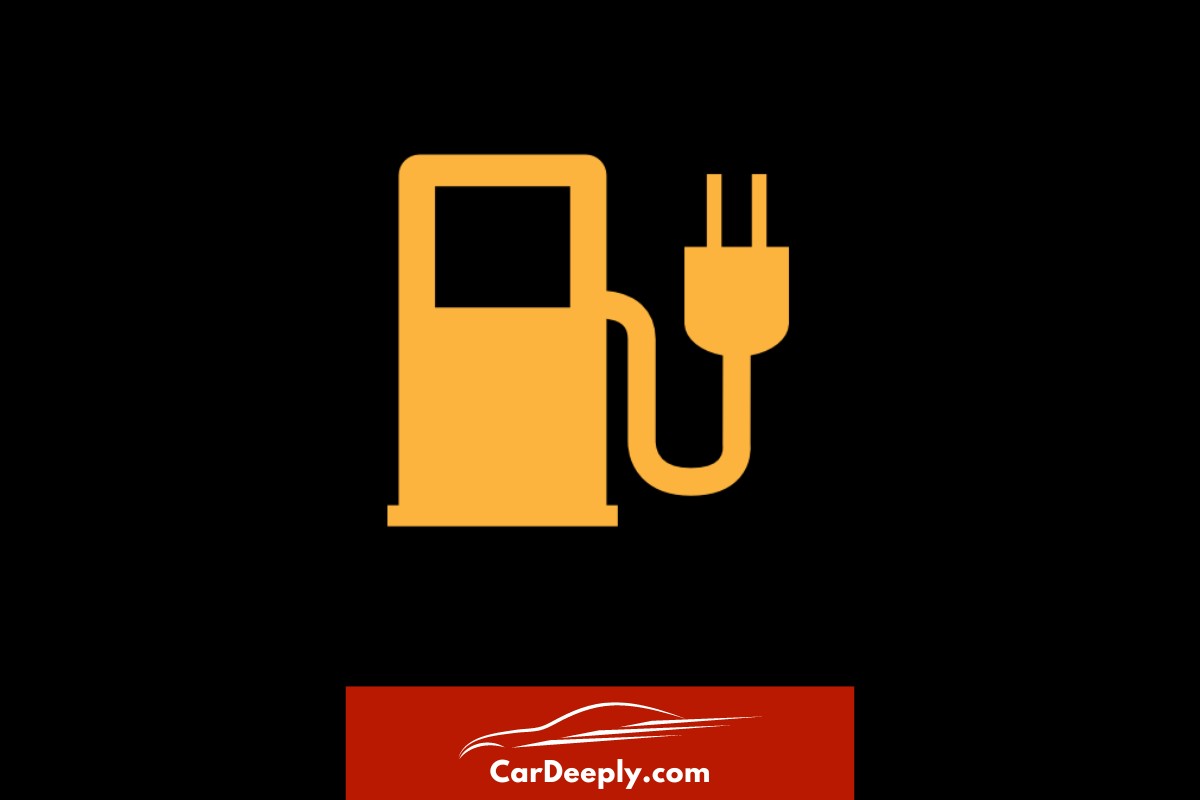Ever pushed your luck with the low fuel warning light, only to end up stranded on the side of the road? It’s a risky gamble that can lead to a costly tow truck call. But what if you could avoid this scenario altogether?
In this guide, you’ll uncover:
- The hidden dangers of ignoring the light
- Quick, effective steps to take when it flickers on
- Proven strategies to prevent it from lighting up
Don’t let an empty tank ruin your day. Read on, and let’s fuel your journey with knowledge and confidence!
Advertising links are marked with *. We receive a small commission on sales, nothing changes for you.
Key Takeaways

- The low fuel warning light is a crucial indicator that alerts you when your fuel is running low.
- Ignoring the warning light can lead to being stranded and potential damage to your engine.
- Most cars can go about 30-50 miles after the light comes on, but it’s best not to push it.
- Running out of fuel can have legal implications in some areas.
- Take immediate action when the low fuel light turns on, find a gas station, and adopt fuel-saving habits to prevent it from happening again.
Description | Low Fuel Indicator Warning Light |
|---|---|
Function | Alerts when fuel level is low |
Trigger Point | Around 10-15% of fuel capacity |
Significance | Refuel to avoid running out |
Risks of Ignoring | Stranded, potential engine damage |
Recommended Actions | Find nearest gas station, drive conservatively |
Additional Information and Notes | Check car manual for specifics |
What is the Low Fuel Indicator Warning Light?
Ever glanced at your dashboard and noticed a little icon that looks like a gas pump? That’s your low fuel indicator warning light. It’s your car’s way of telling you it’s running low on fuel. But it’s not just about the quantity of fuel.
This light is a complex technology linked to your car’s fuel gauge and fuel pump.
How it Works and When it Turns On
The light turns on when your car’s fuel level drops to a certain point, usually around 10-15% of the tank’s capacity. It’s a warning, a nudge to remind you to stop by a gas station soon.
Why You Shouldn’t Ignore the Low Fuel Warning Light
Ignoring this light is a harmless act. After all, you know your car and how far it can go. But here’s the deal:
- Risk of getting stranded: Running out of fuel can leave you stranded in the middle of nowhere.
- Potential engine damage: Driving on low fuel can cause sediment in the tank to be sucked into the fuel pump, potentially damaging your engine.
- Fuel pump wear: The fuel pump can wear out faster as it works harder to draw fuel from an almost empty tank.
How Far Can You Drive When the Low Fuel Light Comes On?
So, how far can you push it when the light comes on? It’s a bit of a “how long is a piece of string” question. It depends on the following:
- Your car model: Different cars have different fuel tank capacities and fuel efficiency.
- Your driving style: Aggressive driving can consume fuel faster than a calm, steady pace.
But as a rule of thumb, most cars can go about 30-50 miles after the light comes on.
Is It Illegal to Run Out of Fuel?
You might be surprised to learn that running out of fuel in some places is illegal.
Why?
Because a car suddenly stopping can cause accidents. So, besides the inconvenience and potential damage to your vehicle, you could also be looking at a fine.
Remember, your car’s low fuel warning light is not a challenge to see how far you can stretch your remaining fuel. It’s a helpful reminder to refuel and keep your journey safe and smooth.
So, next time it lights up, take it seriously. Your car (and your wallet) will thank you!
What to Do When Your Low Fuel Light Turns On
So, your low fuel light just flickered on. Don’t panic! Here’s what you should do:
- Stay calm: Panicking won’t help. Stay calm and focused.
- Find a gas station: Use your car’s navigation system or a mobile app to find the nearest gas station.
- Drive conservatively: Avoid fast acceleration and high speeds to conserve fuel.
Immediate Steps to Take
Pay attention to the light and continue your journey as if nothing happened. Instead, take these immediate steps:
- Plan your route: Choose a route with a gas station. Look for signs indicating the next gas station if you’re on a highway.
- Reduce fuel consumption: Turn off the A/C, close the windows, and avoid unnecessary braking and acceleration.
Tips for Conserving Fuel When Running Low
Running low on fuel? Here are some tips to make every drop count:
- Drive smoothly: Avoid sudden acceleration and braking.
- Use gears wisely: If you have a manual car, shift up early and down late.
- Turn off the engine when idle: If you’re stuck in traffic or waiting for someone, turn off the engine.
How to Prevent Your Fuel Light from Coming On
Prevention is better than cure. Here are some habits to develop to avoid seeing that dreaded light:
- Regularly check fuel levels: Don’t wait for the light to come on. Make it a habit to check your fuel gauge regularly.
- Refuel when you’re down to a quarter tank: This will also help keep your fuel pump in good condition.
Frequently Asked Questions
Can the low fuel warning light malfunction?
Yes, like any other component in your car, the low fuel warning light can malfunction. This could be due to a faulty sensor in the fuel tank or an issue with the light itself on the dashboard. If you suspect a malfunction, it’s best to have it checked by a professional to avoid running out of fuel unexpectedly.
Does driving on low fuel affect fuel efficiency?
Driving on low fuel can decrease your car’s fuel efficiency. This is because the fuel pump has to work harder to draw fuel from an almost empty tank, which can lead to increased fuel consumption.
Can I rely on my car’s estimated range when the low fuel light comes on?
While your car’s estimated range can be a helpful guide, it’s not always 100% accurate. It’s calculated based on your recent driving patterns and varying conditions. Therefore, refueling as soon as possible is always safer when the low fuel light comes on.
Does every car have a low fuel warning light?
Most modern cars have a low fuel warning light as a standard feature. However, some older models or budget cars have different characteristics. Always refer to your car’s manual to understand its features and warnings.
Does the low fuel warning light come on at the same fuel level for all cars?
No, the point at which the low fuel warning light comes on can vary between different car models. Generally, it comes on when around 10-15% of the fuel is left in the tank, but this can differ. It’s best to refer to your car’s manual for specific information.
Conclusion
The low fuel warning light is not just an annoying little icon on your dashboard. It’s a crucial feature to keep you safe and your car running smoothly.
So, remember what you’ve learned here the next time it lights up.
Stay calm, find a gas station, and drive conservatively. And most importantly, make it a habit to check your fuel levels regularly to avoid seeing that light in the first place.

Sebastian loves convertibles and drove a BMW 335i for a long time (325 hp is just a dream). Today, with two children, he is more concerned with SUVs and family-friendly vehicles. In addition to an Audi A4 Avant, he also drives a Cupra Formentor VZ – even as a family man, you can’t do without speed. Get to know Sebastian better and visit the About Us page.
Advertising links are marked with *. We receive a small commission on sales, nothing changes for you.
